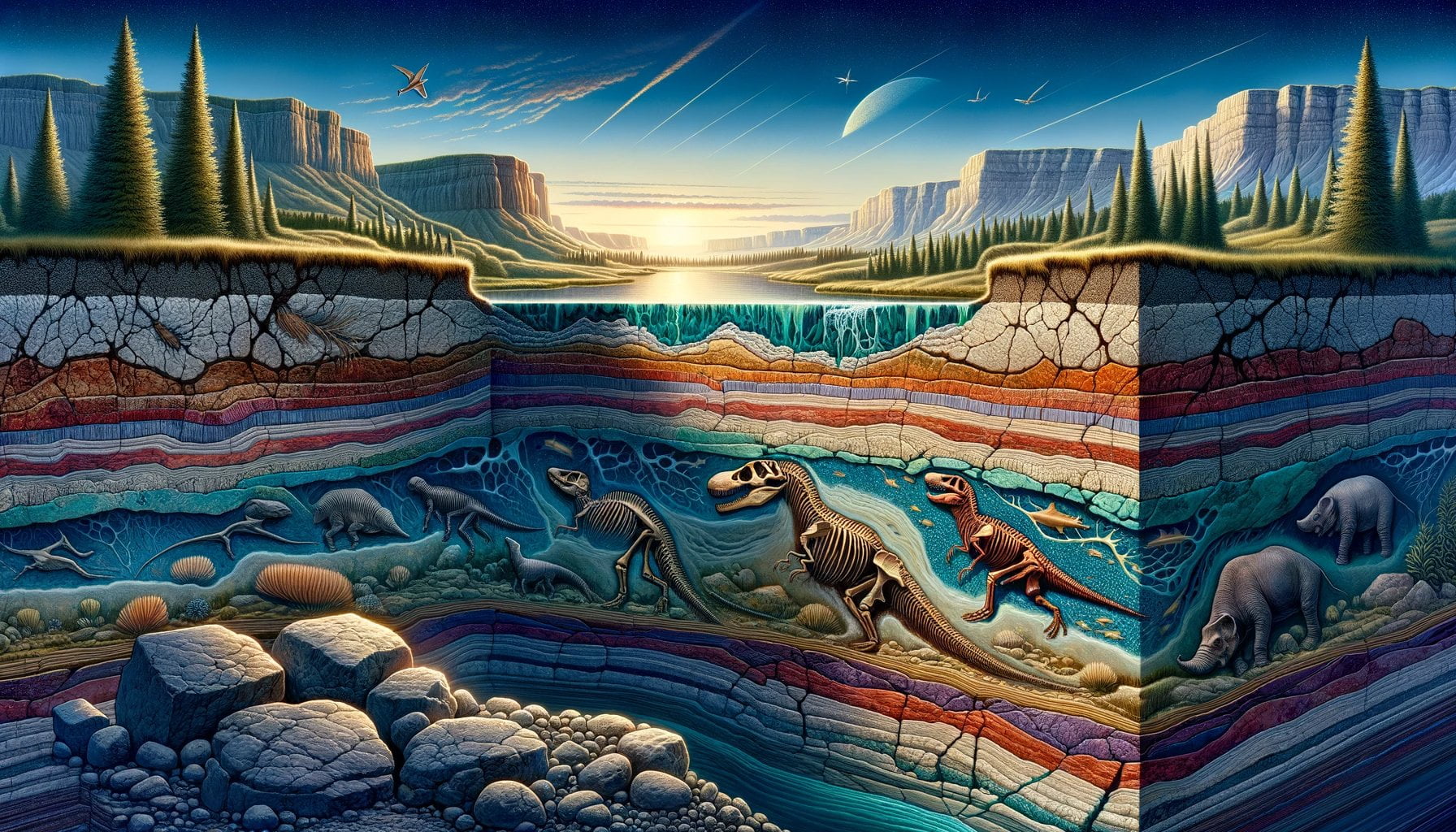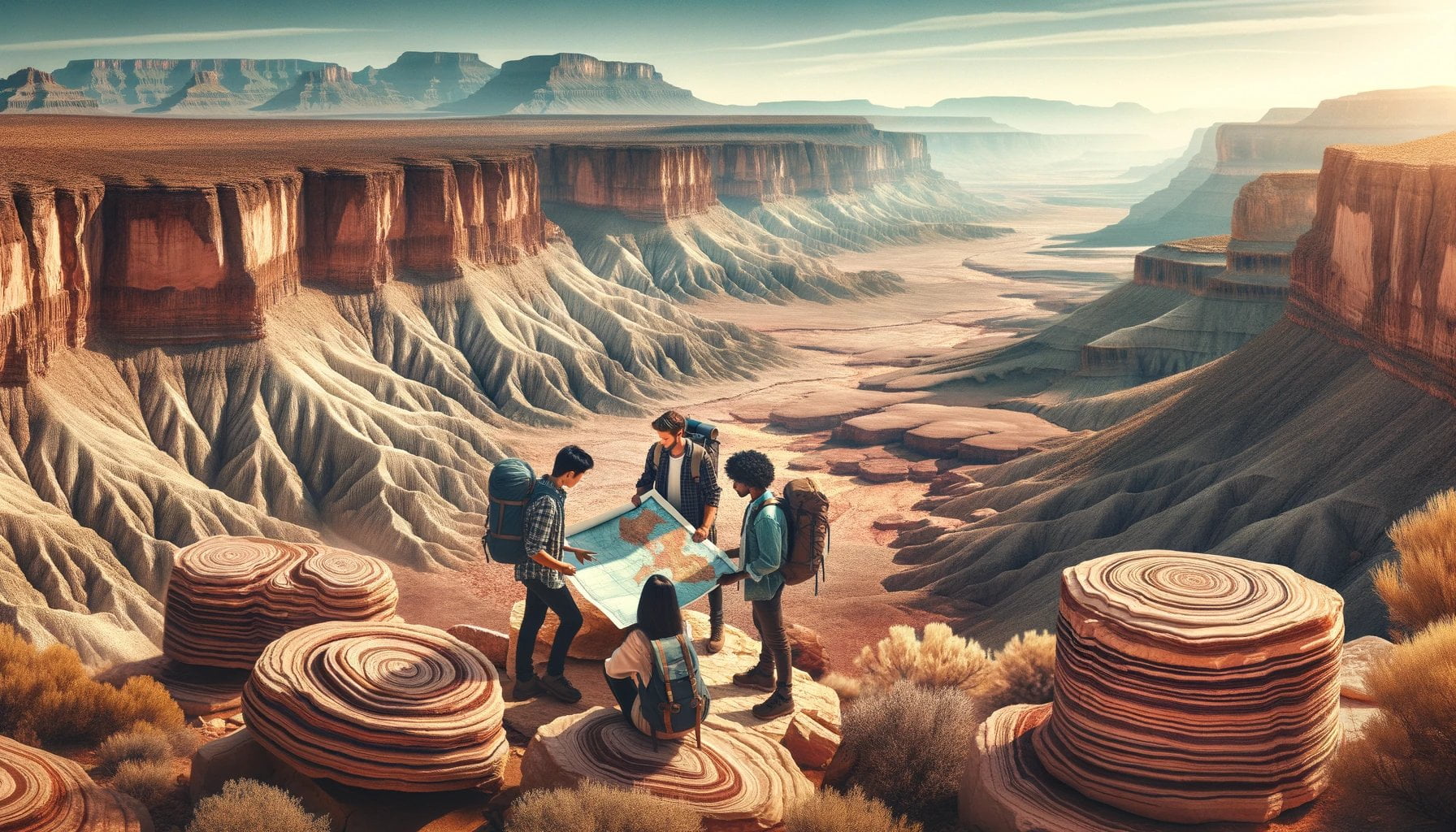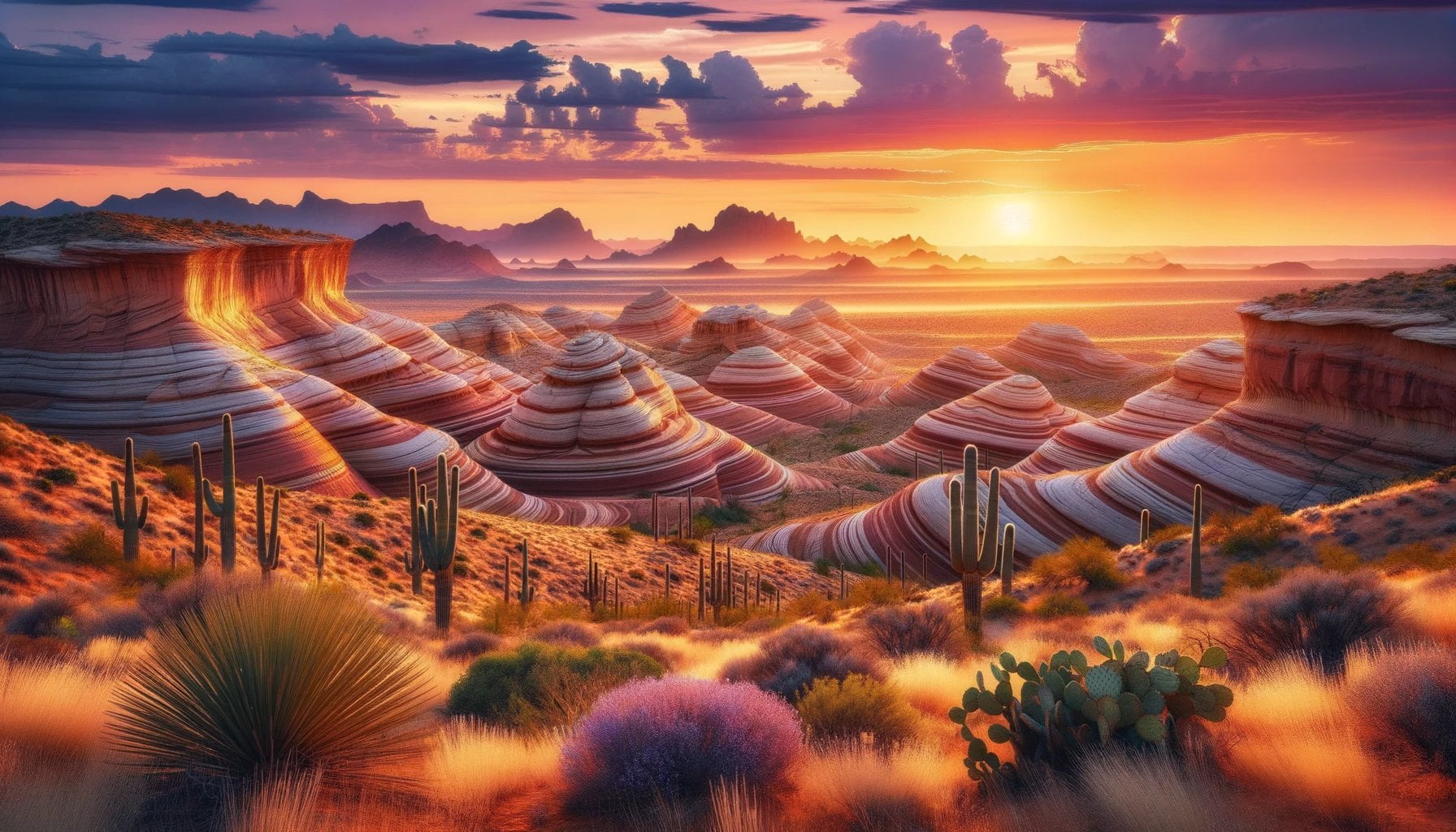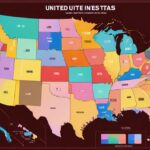Welcome to “The Age of the Southwest: Unraveling its Mystery,” where we delve into the intriguing question of how old the Southwest region really is. As we embark on this captivating journey, we will uncover the historical and geological secrets that have shaped this awe-inspiring landscape. Drawing upon a wealth of research and a passion for deciphering nature’s enigmas, we aim to shed light on the age and origins of this diverse and captivating corner of the United States. Join us as we unravel the mysteries of the Southwest and unveil its ancient secrets.
Key Takeaways:
- The Southwest region of the United States has a rich history, influenced by Native American traditions, with evidence of human habitation for over 10,000 years.
- The Spanish were the first Europeans to explore the Southwest in the 16th century.
- The Southwest region is comprised of Arizona, Colorado, Nevada, New Mexico, and Utah.
- With a population of over 44 million, the Southwest is the second most populous region in the country.
- The economy of the Southwest is based on agriculture, mining, and tourism.
- The region is known for its stunning deserts and mountain ranges.
- Major cities in the Southwest include Phoenix, Las Vegas, El Paso, Albuquerque, and Tucson.
- The Old Southwest refers to the frontier territories of the United States from the Revolutionary War to the early 1800s, with Native American nations and European empires competing for resources.
- The Southwest has unique regions, such as Central Papua, Highland Papua, South Papua, Southwest Papua, and West Papua.
- Native Americans in the Southwest built large houses out of mud, and their presence predates European arrival by at least 10,000 years.
How old is the Southwest region?

The Southwest region of the United States has a rich and fascinating history that spans thousands of years. From its geological origins to the arrival of Native Americans and later European explorers, the Southwest has seen the rise and fall of civilizations, the blending of cultures, and the shaping of its unique identity. In this article, we will explore the age of the Southwest and delve into the mysteries that have unfolded over time.
Geological Origins
To understand the age of the Southwest region, we must first explore its geological origins. The Southwest is home to a diverse landscape, from vast deserts to majestic mountain ranges. These landscapes were shaped by millions of years of geological processes.
Imagine the Southwest as a canvas upon which nature has painted a masterpiece. Each layer of rock tells a story, revealing clues about the region’s age. Through extensive research and geological surveys, experts have uncovered a timeline that dates back millions of years.
Ancient Inhabitants
Long before the arrival of European explorers, the Southwest was inhabited by Native American tribes. These tribes, including the Ancestral Pueblo and Hohokam peoples, have called the region home for at least 10,000 years. They lived in harmony with the land, building magnificent structures out of mud and stone.
The Native American cultures that flourished in the Southwest left behind a rich legacy of art, traditions, and spiritual beliefs. Their presence in the region is a testament to the age and deep-rooted history of the Southwest.
Early European Exploration
In the 16th century, the Spanish became the first Europeans to explore the Southwest. Led by explorers like Francisco Vázquez de Coronado and Juan de Oñate, they ventured into the region in search of wealth and new trade routes.
The arrival of the Spanish marked a significant turning point in the region’s history. Their presence brought about changes in culture, language, and architecture. The combination of Native American and Spanish influences shaped the Southwest into the vibrant and diverse region it is today.
The Age of Southwest States
The Southwest region of the United States is composed of the states of Arizona, Colorado, Nevada, New Mexico, and Utah. Each of these states has a unique history and development that contributes to the age of the Southwest as a whole.
Take Arizona, for example. This state is known for its iconic natural landmarks, such as the Grand Canyon and Monument Valley. These geological wonders are a testament to the ancient history of the Southwest. The Grand Canyon, for instance, was carved by the Colorado River over millions of years, revealing layers of rock that tell a story of the region’s age.
New Mexico, on the other hand, is rich in Native American history and cultural heritage. The state is home to ancient ruins, such as Chaco Canyon and Taos Pueblo, which offer a glimpse into the lives of the Southwest’s earliest inhabitants.
Putting It All Together
When we consider the geological origins, the ancient Native American civilizations, and the arrival of European explorers, we begin to unravel the age of the Southwest. It is a region that has been shaped and molded by countless years of natural forces and human influences.
The Southwest’s age cannot be pinpointed to a specific number of years, as it is a culmination of millions of years of geological processes and thousands of years of human habitation. It is a complex tapestry of time and history that continues to evolve and captivate our imaginations.
So, when someone asks, “How old is the Southwest region?” we can confidently say that it is a place steeped in history, with a story that spans countless generations and traverses the boundaries of time itself.
Conclusion
As we conclude our exploration into the age of the Southwest region, we are reminded of the vastness and complexity of this captivating land. Its geological origins, ancient Native American cultures, and the arrival of European explorers have all contributed to the rich tapestry of history that defines the Southwest.
The Southwest region is not just a place on a map; it is a living testament to the resilience and ingenuity of the human spirit. It is a place where past and present merge, where stories of ancient civilizations echo through time, and where the mysteries of the natural world continue to be unraveled.
So, the next time you find yourself gazing upon the majestic landscapes of the Southwest, take a moment to reflect on the age and the wonders that have shaped this remarkable region.
Discover what is truly important to the Southwest region, and why it is such a special place. What is important to the Southwest region?
Experience the rich and vibrant main culture that defines the Southwest region. What is the main culture in the Southwest region?
Indigenous Cultures of the Southwest Region
Few regions in the United States possess a more diverse and fascinating history than the Southwest. From its breathtaking landscapes shaped by millions of years of geological processes to its rich indigenous cultures, this region holds a wealth of ancient mysteries waiting to be unraveled.
Origins of Native Cultures
The origins of the indigenous cultures of the Southwest region can be traced back to early immigrants who crossed the Bering land bridge from Siberia to Alaska around 10,000 B.C. However, some scholars argue that native cultures arrived in the Americas as early as 25,000 B.C., highlighting the deep-rooted history of the Southwest.
Distinct Ways of Life
The Native peoples of the Southwest developed distinct ways of life that were intricately tied to the region’s landscape. Sedentary farming communities, such as the Hopi, Zuni, Yaqui, and Yuma, emerged, cultivating crops like corn, beans, and squash. These communities began farming around 1500 B.C. and adapted to the arid environment through techniques like irrigation and dry farming.
Cultural and Linguistic Diversity
Representatives from several North American Indian language families, including Hokan, Uto-Aztecan, Tanoan, Keresan, and Kiowa-Tanoan, populated the Southwest region. This linguistic diversity reflects the complexity and rich heritage of the native cultures that flourished in this area.
Interaction with European Explorers
European exploration in the 16th century brought about significant changes in the Southwest region. The Spanish encountered remaining descendants of the Ancestral Puebloan cultures, including the Navajo, Apache, and Hopi, among others. The arrival of European settlers and their impact on the native cultures shaped the region’s history and brought about changes in culture, language, and architecture.
Resilience and Adaptation
The Southwest Indian tribes underwent changes and urbanization in the 19th and 20th centuries, as Euro-American settlement continued to impact their way of life. However, despite these challenges, the native cultures of the Southwest region have displayed tremendous resilience and adaptability. Their ties to the ancestral Puebloan civilizations serve as a testament to their enduring heritage and influence.
Key Takeaways:
- Indigenous cultures in the Southwest region have ancient origins dating back to early immigrants who crossed the Bering land bridge.
- Sedentary farming communities like the Hopi, Zuni, Yaqui, and Yuma emerged in the Southwest, cultivating crops and developing advanced agricultural techniques.
- The Southwest Indian tribes represent a linguistic and cultural tapestry, with representatives from various Native American language families.
- European exploration and settlement brought about changes in the Southwest region, impacting the native cultures.
- Despite the challenges faced, the native cultures of the Southwest have exhibited resilience and adaptability, preserving their ancestral heritage.
Citation:
- Source 1: Smithsonian Institution – Native Americans of the Southwest
- Source 2: National Park Service – Native American Cultures
Colonization and Impact on the Southwest Region
The Southwest region of the United States is a place of rich history and cultural significance. The age of this region is intertwined with the impacts of colonization, as European exploration and settlement brought about significant changes that shaped the landscape, languages, and traditions of the native peoples.
The Ancient Pueblo People and the Southwest
Before colonization, the Southwest region was inhabited by the Ancestral Pueblo people, who were the first farmers in America. These indigenous people played a crucial role in shaping the region’s age and culture. They built impressive structures, such as cliff dwellings and pueblos, showcasing their advanced architectural skills.
Key Takeaways:
– The Ancestral Pueblo people were the first farmers in America and constructed elaborate buildings.
– Their agricultural practices and surplus food led to the development of villages and pueblos.
– The cultivation of corn played a significant role in their creation myths and religious practices.
Colonization: Spanish Influence in the Southwest
The Spanish arrived in the Southwest region in the 16th century, primarily seeking riches and spreading Christianity. Their colonization efforts left a lasting impact on the lives and cultures of the Native American populations in the area.
Key Takeaways:
– The Spanish colonization of the Southwest region had significant and long-lasting consequences for the native populations.
– The introduction of new technologies, such as horses and firearms, transformed native societies and warfare.
– The Spanish forcibly converted many Native Americans to Catholicism and imposed their language and cultural practices.
The Legacy of Colonization
The impact of colonization on the Southwest region cannot be overstated. It led to the displacement of indigenous peoples, the loss of ancestral lands, and the erosion of cultural traditions. However, indigenous cultures in the Southwest have displayed resilience and adaptability, preserving their ancestral heritage despite the challenges they faced.
Key Takeaways:
– European colonization brought about changes in the Southwest region, impacting culture, language, and architecture.
– The native cultures of the Southwest have shown resilience in preserving their traditions and heritage.
– Today, the Southwest region is linguistically and culturally diverse, with representatives from various Native American language families.
Please note that the age of the Southwest region cannot be pinpointed to a specific number of years, as it is a culmination of millions of years of geological processes and thousands of years of human habitation.
Citations:
– Khan Academy: Native American culture of the Southwest
– Encyclopedia Britannica: Southwest Indian
Significant Historical Events That Shaped the Southwest Region
The Southwest region of the United States is steeped in history, with a rich tapestry of events that have shaped its unique character. From ancient indigenous cultures to European exploration and colonization, the Southwest has a fascinating story to tell. In this article, we will explore some significant historical events that have left their mark on the Southwest region.
Early Indigenous Cultures: The Anasazi, Hohokam, and Mogollon
The story of the Southwest begins long before European settlers arrived. Indigenous peoples have inhabited the region for thousands of years, leaving behind a legacy of ancient traditions and impressive architectural achievements. Among the notable cultures are the Anasazi, Hohokam, and Mogollon.
The Anasazi, also known as the Ancestral Pueblo people, were master builders who constructed elaborate cliff dwellings and intricate stone masonry. They thrived between 550 and 1300 CE, developing advanced agricultural techniques and creating a complex society.
The Hohokam, who lived in present-day Arizona, built extensive irrigation systems and canals that allowed them to farm in the arid desert environment. Their civilization flourished between 300 and 1450 CE, leaving behind remnants of their sophisticated civilization.
The Mogollon people, spanning from present-day New Mexico to Arizona, developed a unique ceramic tradition and specialized in hunting and gathering. They inhabited the region between 150 and 1450 CE, contributing to the cultural mosaic of the Southwest.
Spanish Colonization and the Impact on Indigenous Cultures
In the 16th century, Spanish explorers set foot in the Southwest region, forever altering the course of history. Led by figures such as Francisco Vázquez de Coronado and Juan de Oñate, the Spanish sought to expand their empire and convert the indigenous peoples to Catholicism.
The arrival of the Spanish brought new technologies, including horses and metal tools, which significantly changed the way of life for the indigenous communities. They also established missions and presidios, leading to the forced conversion and assimilation of the Native Americans into Spanish society.
This period of colonization had a profound impact on the indigenous cultures of the Southwest, resulting in the displacement of native peoples and the erosion of their cultural traditions. However, despite the challenges they faced, many indigenous communities have managed to preserve their ancestral heritage and cultural practices.
American Expansion and Statehood
The Southwest region witnessed further changes with the expansion of the United States in the 19th and early 20th centuries. Texas became a state in 1845, followed by Oklahoma in 1907, New Mexico in 1912, and Arizona in 1912. During the American Civil War, Texas was the only state from the Southwest involved in the conflict.
This period of American expansion brought with it significant changes in culture, language, and architecture. European settlers and American pioneers brought their own traditions and practices, blending them with the existing cultural fabric of the region. The Southwest became a hub of diverse identities and influences.
Key Takeaways:
- The Southwest region is home to ancient indigenous cultures such as the Anasazi, Hohokam, and Mogollon.
- Spanish colonization in the 16th century brought about profound changes in the Southwest, including forced conversion and assimilation of Native Americans.
- American expansion in the 19th and early 20th centuries led to the incorporation of Texas, Oklahoma, New Mexico, and Arizona as states.
- The Southwest region is characterized by a diverse cultural heritage, shaped by indigenous traditions, Spanish colonization, and American expansion.
Sources:
– Britannica: Southwest – History, Population, Demographics, & Map
– Britannica Kids: The Southwest

FAQ
Q1: What is the age of the Southwest region of the United States?
A1: The Southwest region of the United States has a long and rich history dating back thousands of years. Native American cultures have inhabited the region for at least 10,000 years before the arrival of Europeans.
Q2: When did the first Europeans explore the Southwest region?
A2: The first Europeans to explore the Southwest region were the Spanish in the 16th century. Their arrival had a major and lasting impact on the Native American populations in the area.
Q3: Which states are included in the Southwest region of the United States?
A3: The Southwest region of the United States is made up of the states of Arizona, Colorado, Nevada, New Mexico, and Utah. These states are known for their unique landscapes and rich cultural history.
Q4: What is the population of the Southwest region?
A4: The Southwest region has a population of over 44 million people, making it the second most populous region in the country. This population includes a diverse mix of cultures and ethnicities.
Q5: What is the economy of the Southwest region based on?
A5: The economy of the Southwest region is based on agriculture, mining, and tourism. The region’s natural resources and scenic landscapes make it a popular destination for visitors from around the world.
- Star Ring Trends: Etsy vs Amazon - March 28, 2025
- Boost Pollinator Habitats: Baby Blue Eyes Sustainable Farming Guide - March 28, 2025
- Protect Big Black Bears: Effective Conservation Strategies - March 28, 2025
















